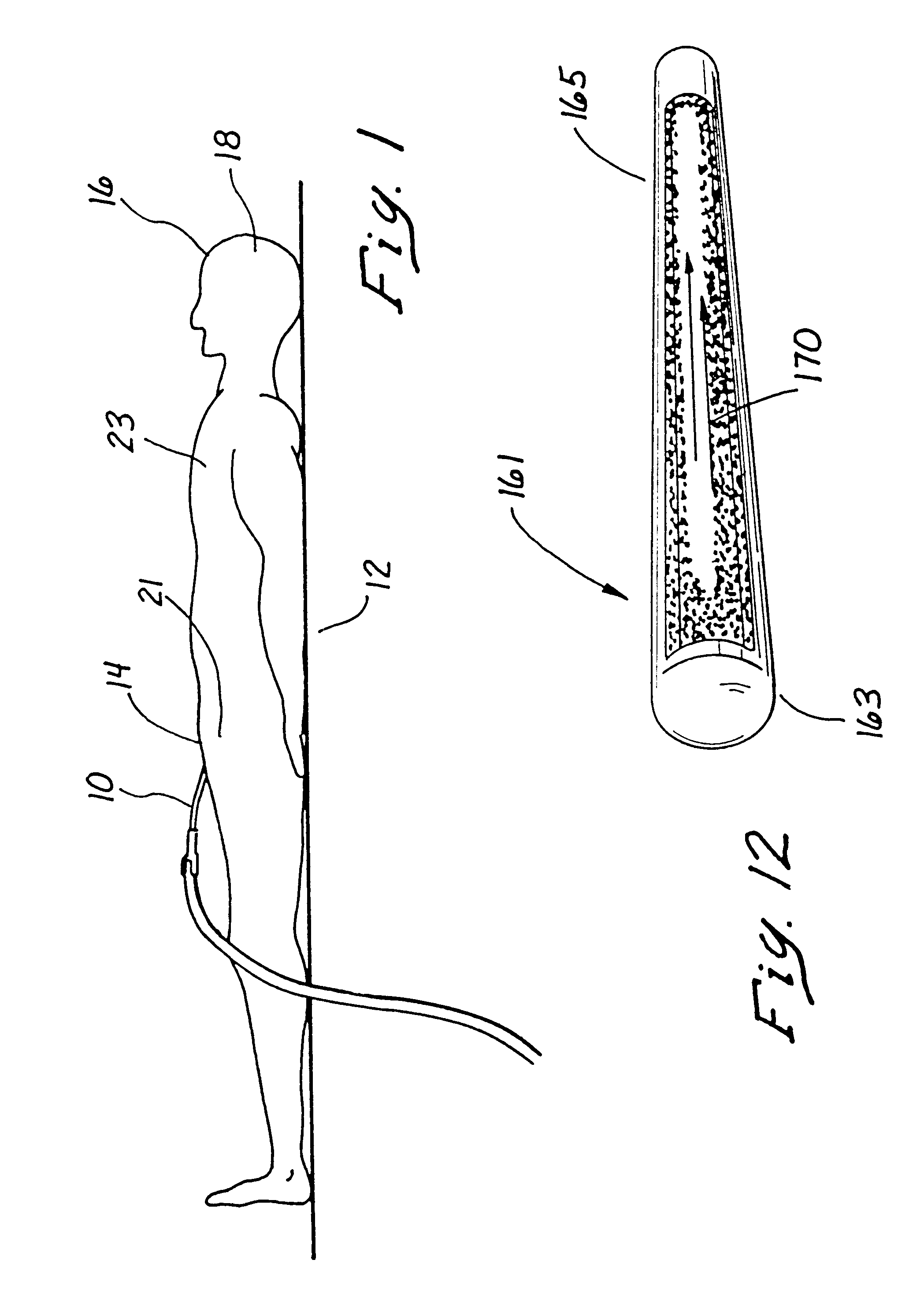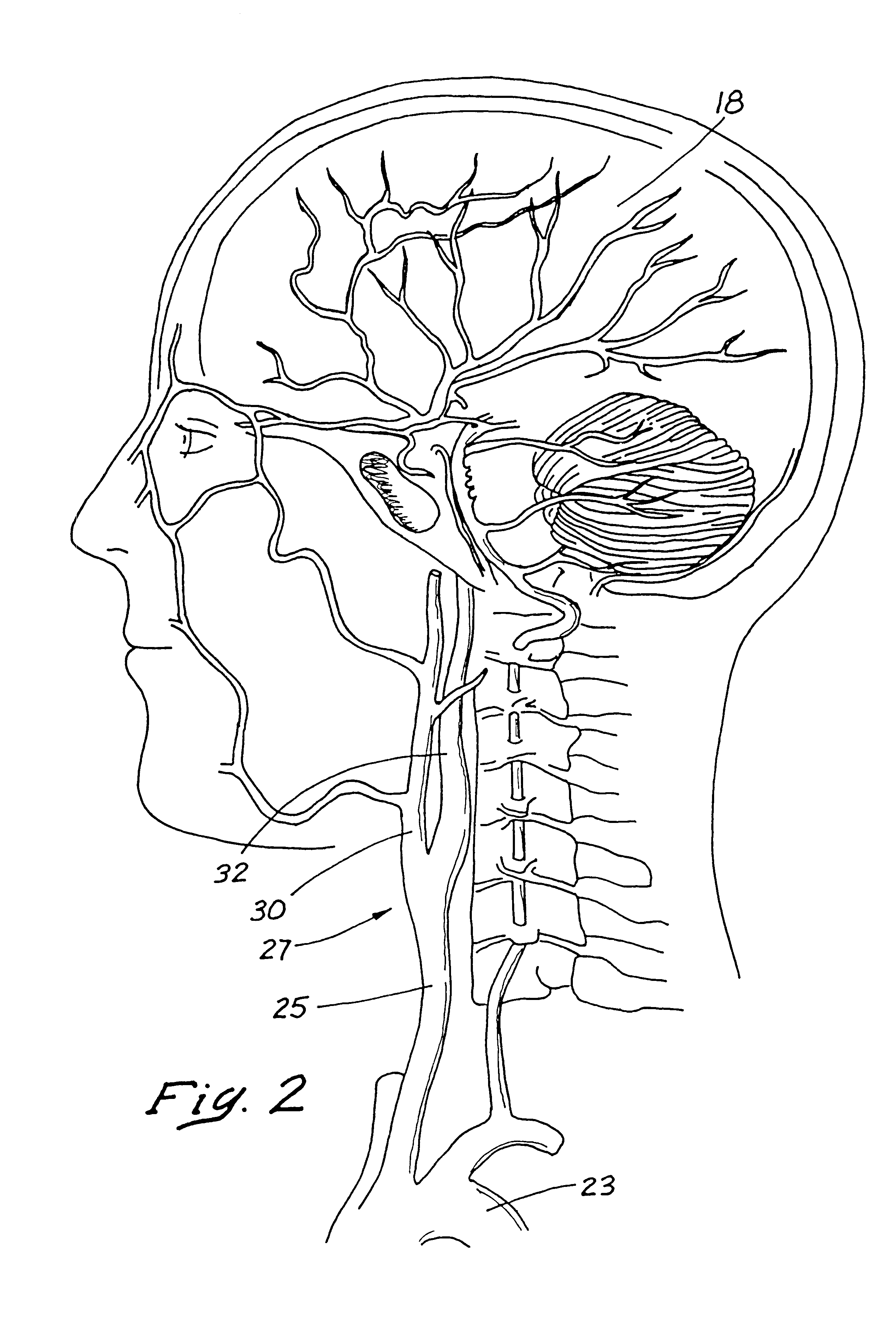Indwelling heat exchange catheter and method of using same
a heat exchange catheter and indwelling technology, applied in balloon catheters, medical science, surgery, etc., can solve problems such as inconvenient systemic approach, cardiac arrhythmia, pulmonary edema and coagulopathy,
- Summary
- Abstract
- Description
- Claims
- Application Information
AI Technical Summary
Problems solved by technology
Method used
Image
Examples
Embodiment Construction
A heat exchange catheter is illustrated in FIG. 1 and designated generally by the reference numeral 10. The catheter 10 is operatively disposed with respect to a body 12 of a patient having a groin 14, a head 16, and a brain 18. More specifically, the catheter 10 can be inserted percutaneously through a puncture or surgical cut down at the groin 14, and into the femoral artery 21. Following this initial introduction, the catheter 10 can be moved through the femoral artery 21 and the aortic arch 23, into the common carotid artery 25 best illustrated in FIG. 2. This common carotid artery 25 divides at a carotid branch 27 into an external carotid artery 30, which primarily supplies blood 31 to the face if the patient, and an internal carotid artery 32, which primarily supplies blood to the brain 18 of the patient.
In the concept of this invention, the brain 18 is merely representative of a portion of the body 12 of the patient, and the arteries 21, 25, 30 and 32 are merely representativ...
PUM
 Login to View More
Login to View More Abstract
Description
Claims
Application Information
 Login to View More
Login to View More - R&D
- Intellectual Property
- Life Sciences
- Materials
- Tech Scout
- Unparalleled Data Quality
- Higher Quality Content
- 60% Fewer Hallucinations
Browse by: Latest US Patents, China's latest patents, Technical Efficacy Thesaurus, Application Domain, Technology Topic, Popular Technical Reports.
© 2025 PatSnap. All rights reserved.Legal|Privacy policy|Modern Slavery Act Transparency Statement|Sitemap|About US| Contact US: help@patsnap.com



